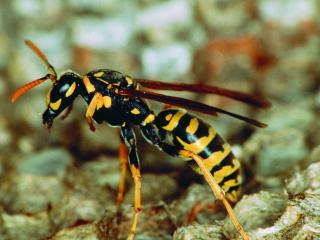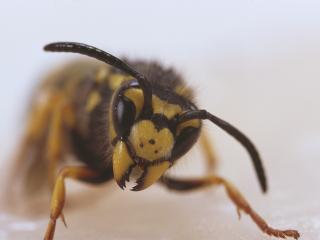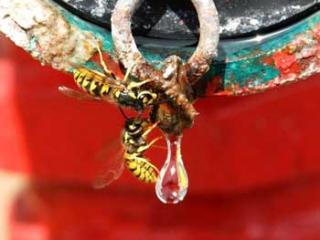Sting in the tail
Although paper wasps sting, they won’t attack if you leave them alone. If you notice lots of paper wasps flying into a bush or an outdoor building, stay away. Your adults can remove the nest themselves or ring a pest controller.
There’s another species that’s much more dangerous. European wasps are already living in the eastern states but they aren’t established in Western Australia, which means they haven’t become permanent residents here.
European wasps arrive every summer by hitching a lift across the Nullarbor, hiding in trucks, packing crates or big machinery.
The only reason European wasps haven’t managed to establish here is that people report them to PaDIS, and people from the Department of Agriculture and Food, Western Australia, remove the nests.
As a pest detective you should know what a European wasp looks like. It’s striped black and yellow like a paper wasp, but a keen-eyed kid will be able to notice the difference in flight.
Paper wasps fly lazily, with their legs dangling. European wasps tuck their legs up, hidden under their bodies, and dart swiftly or hover around barbecues, pet food bowls and soft drinks cans.
Imagine drinking cola and getting stung in the mouth! A pest detective who can recognise a European wasp and warn other people will be the hero of the day.



